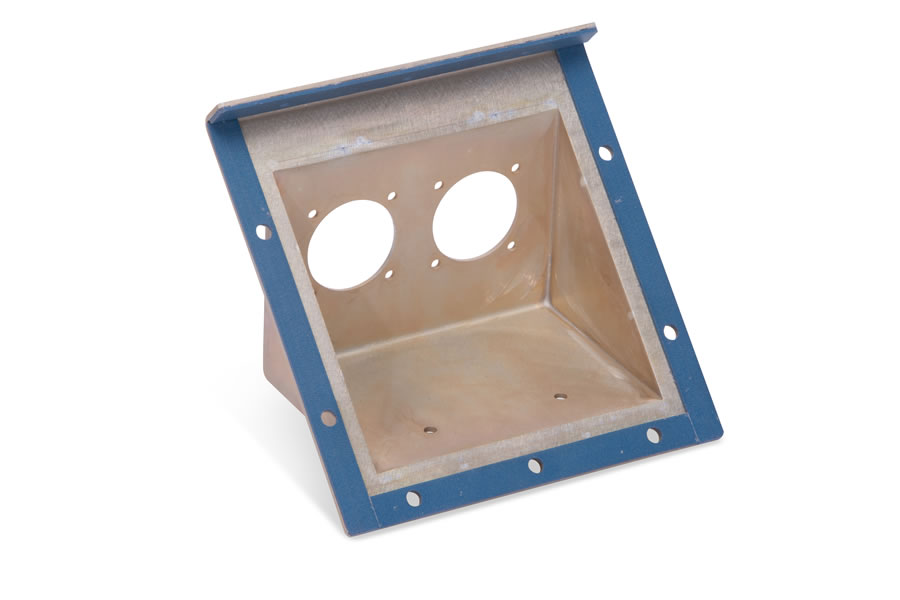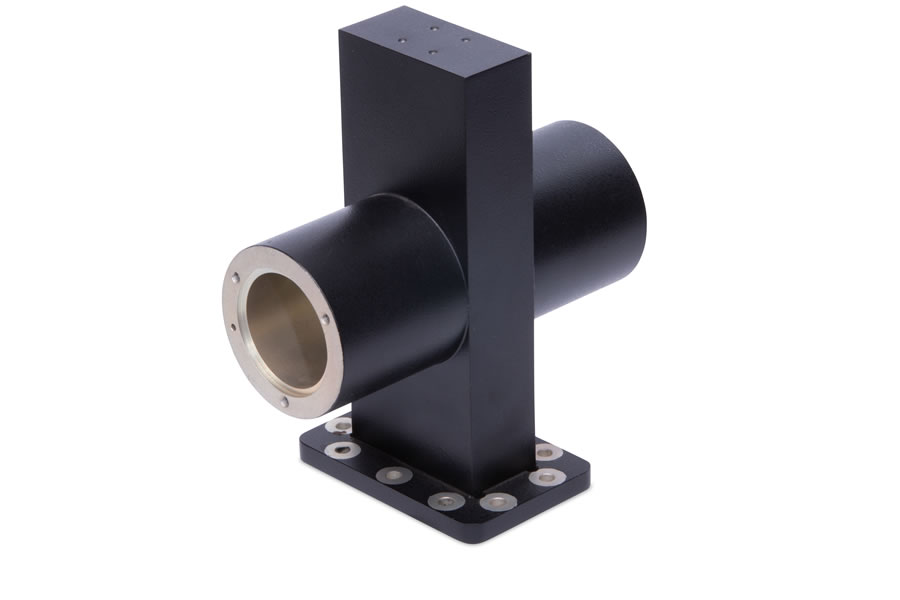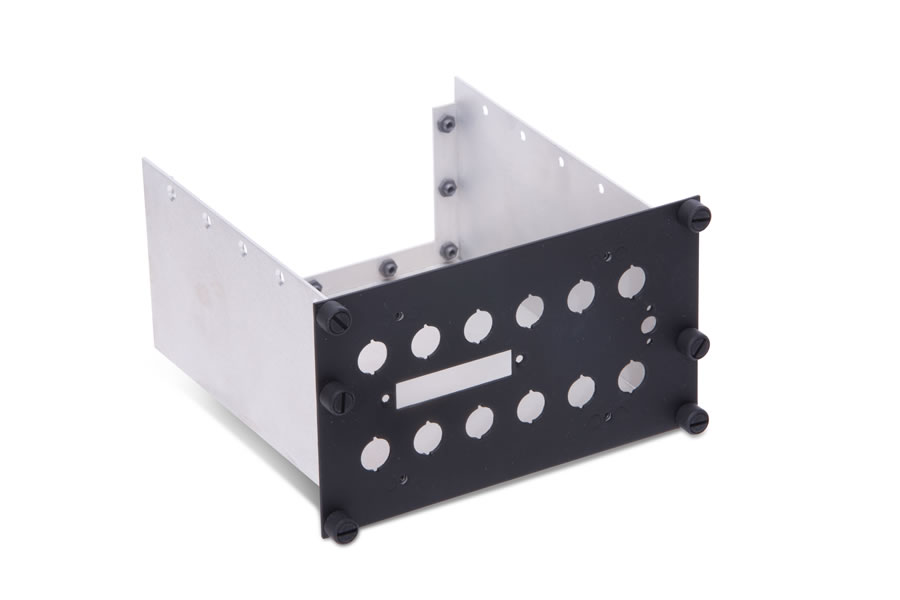The dip brazing process allows simultaneous joining of multiple joints with varying material thicknesses. The resultant joints are leak-tight and EMI shielded. As the parts are uniformly heated with minimum fixturing, only minor distortion results. This minor distortion is easily managed with proper tolerancing and design of components.
The parts are cleaned of excess oxides. Parts are then assembled with the proper filler metal applied. The form of filler alloy varies to suit the type of joint. At Mech-Tronics, we utilize our in-house Photo Chemical Etching process to make our custom brazing shims. The precision achieved with this process yields excellent control over excess filler metal flow. Parts are placed onto stainless steel fixtures or baskets. The fixtured assembly is heated to 985°F in a pre-heat furnace and then immersed in a bath of molten salt that contains a flux. The molten flux (1100°F) serves a multi-purpose role: providing heat transfer, supporting the assembly, and of course, fluxing the joints. Immersion time required will vary, but generally is less than two minutes. During the course of this cycle, filler metal will melt and flow to all joints through a capillary action. The assembly is removed from the bath, cooled, and cleaned; ready for further processing.
TYPICAL ALUMINUM DIP BRAZING PROCESS
- Clean component parts prior to assembling.
- Perform subassembly work (i.e., installation of stainless-steel hardware).
- Assemble all components, inserting brazing shims at lap joints of .187 or greater. Butt joints of less than .187 thick will have paste applied later in the process. Assembly may take a variety of forms:
- Slot and Tabs
- Self-locking Joints
- Tack welding
- Spot welds
- Aluminum Screws
- Aluminum Rivets
- Staking
- Verify dimensions and straighten as required.
- Apply filler metal paste to all joints.
- Load on brazing fixture.
- Preheat at 985°F (Cycle time is dependent on mass and part configuration).
- Remove from preheat furnace and immediately immerse in salt bath. The bath operates at 1100°F. (Immersion must be performed at a constant rate to minimize distortion and filler metal run-off. Time within the bath is dependent on mass and part configuration.)
- Remove from bath taking care to allow for flux drainage.
- Move to quenching area.
- After part has cooled, remove part from fixture and clean to remove flux residue.
- Inspect braze joints.
- Grind construction aids (screw heads, rivet rollover, tabs, tack welds).
- Straighten.
- Age harden at 350°F for 8-10 hours.
- Inspect.



